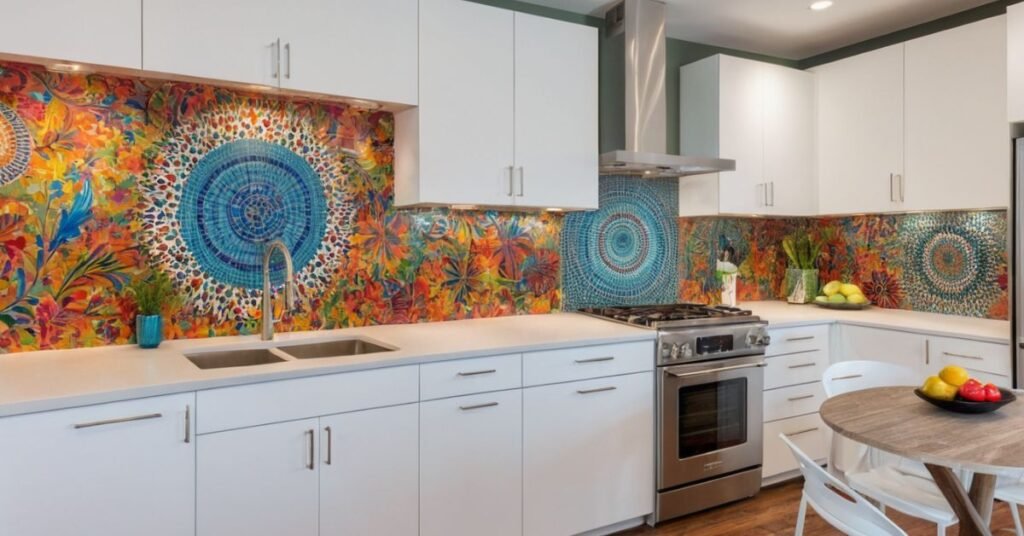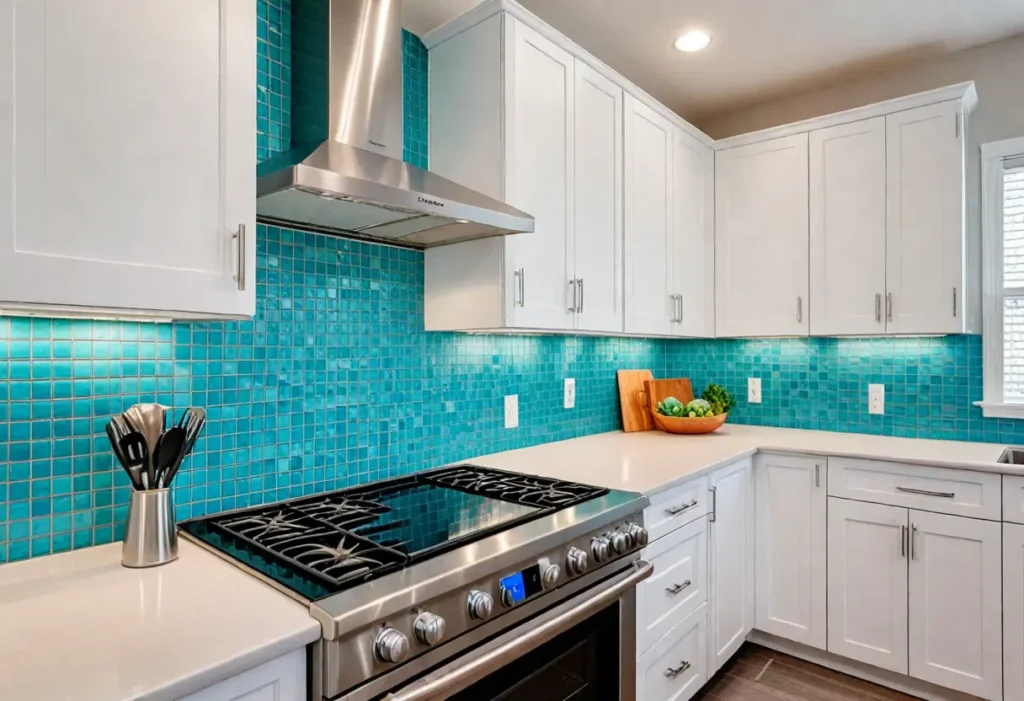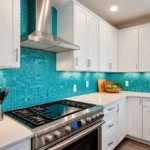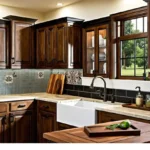In recent years, the concept of sustainability has transcended beyond a mere trend and become a critical aspect of home design and decor, especially in Earth-Friendly Dynamic Sustainable Kitchen Design Ideas. As more homeowners and designers are looking for ways to reduce their environmental footprint, incorporating sustainable materials into kitchen decor has become increasingly popular. A sustainable kitchen not only benefits the planet but also creates a healthier and often more stylish environment. This comprehensive guide will walk you through everything you need to know about incorporating sustainable materials into your kitchen decor, ensuring that you have all the information you need in one place.
Understanding Sustainable Materials
Before diving into specific materials and tips, it’s important to understand what makes a material sustainable, especially in Dynamic Sustainable Kitchen Design Ideas. Sustainable materials are those that have a minimal negative impact on the environment during their life cycle—from production to disposal. Key characteristics of sustainable materials include:
- Renewability: Materials that can be replenished naturally over short periods, such as bamboo or cork.
- Recyclability: Materials that can be recycled or upcycled into new products, reducing waste.
- Non-toxicity: Materials that do not emit harmful chemicals or pollutants, ensuring indoor air quality.
- Durability: Long-lasting materials that do not require frequent replacement, reducing resource consumption.
- Low Environmental Impact: Materials that are produced using processes that minimize pollution, energy consumption, and waste.
Sustainable Materials for Kitchen Decor
1. Bamboo

Related – 22 Creative Ideas For Decorating Above Kitchen Cabinets In 2024
Bamboo is one of the most versatile and sustainable materials available. It grows rapidly, reaching maturity in just a few years, and regenerates without the need for replanting. Bamboo can be used for various kitchen elements, including flooring, cabinetry, and countertops.
Benefits of Bamboo:
- Rapidly renewable resource
- Durable and hard-wearing
- Naturally resistant to moisture and bacteria
- Available in various finishes and styles
2. Recycled Wood

Reclaimed or recycled wood is an excellent choice for sustainable kitchen decor. Using wood that has been salvaged from old buildings, barns, or other structures reduces the demand for new lumber and preserves existing forests.
Benefits of Recycled Wood:
- Adds character and a rustic charm to your kitchen
- Reduces deforestation and waste
- Can be used for flooring, cabinetry, countertops, and open shelving
3. Cork

Cork is harvested from the bark of cork oak trees without harming the tree, making it a highly sustainable material. It is naturally resistant to moisture, mold, and mildew, making it an excellent choice for kitchen floors and other surfaces.
Benefits of Cork:
- Renewable and biodegradable
- Soft underfoot, reducing strain during prolonged standing
- Excellent thermal and acoustic insulation properties
4. Recycled Glass

Recycled glass countertops and backsplashes are made from repurposed glass bottles and windows, creating a unique and eco-friendly aesthetic. These surfaces are available in a variety of colors and patterns, offering both style and sustainability.
Benefits of Recycled Glass:
- Diverts glass waste from landfills
- Durable and heat-resistant
- Easy to clean and maintain
- Adds a modern, artistic touch to your kitchen
5. Concrete

Concrete countertops and flooring can be a sustainable choice when made with eco-friendly practices. Using recycled aggregates, fly ash, or slag can significantly reduce the environmental impact of concrete production.
Benefits of Concrete:
- Highly durable and long-lasting
- Can be customized with various finishes and colors
- Excellent thermal mass properties for energy efficiency
6. Recycled Metal

Recycled metal, such as stainless steel or aluminum, can be used for countertops, backsplashes, and appliances. These materials are highly durable, easy to clean, and can be recycled again at the end of their lifespan.
Benefits of Recycled Metal:
- Reduces the need for virgin metal extraction
- Resistant to heat and corrosion
- Offers a sleek, modern aesthetic
7. Natural Stone

While natural stone, such as granite, marble, or soapstone, is not renewable, it is highly durable and can last a lifetime with proper care. Opting for locally sourced stone reduces the environmental impact associated with transportation.
Benefits of Natural Stone:
- Timeless and elegant appearance
- Extremely durable and heat-resistant
- Requires minimal maintenance
8. Linoleum

Linoleum is a natural flooring material made from linseed oil, wood flour, cork dust, and other renewable materials. It is biodegradable and available in a wide range of colors and patterns, making it a versatile choice for kitchen floors.
Benefits of Linoleum:
- Renewable and biodegradable
- Naturally antimicrobial and hypoallergenic
- Durable and easy to clean
Tips for Incorporating Sustainable Materials
1. Prioritize Local Sourcing
Whenever possible, choose materials that are sourced locally to reduce the environmental impact associated with transportation. Local materials also often support the local economy and craftsmen.
2. Choose Non-Toxic Finishes
Opt for finishes and sealants that are low in volatile organic compounds (VOCs) to ensure better indoor air quality. Look for products that are water-based and eco-friendly.
3. Maximize Natural Light
Utilize natural light to reduce the need for artificial lighting, which can save energy and create a more inviting space. Consider installing larger windows, skylights, or glass doors.
4. Invest in Energy-Efficient Appliances
When updating your kitchen decor, consider replacing old appliances with energy-efficient models. Look for appliances with the ENERGY STAR label, which indicates they meet energy efficiency guidelines set by the U.S. Environmental Protection Agency.
5. Repurpose and Upcycle
Get creative by repurposing and upcycling existing materials. For example, use reclaimed wood for open shelving, old glass bottles for decorative storage, or vintage metal containers for planters.
6. Opt for Multi-Functional Furniture
Choose furniture that serves multiple purposes to reduce the number of items needed in your kitchen. For example, a kitchen island with built-in storage or seating can maximize functionality while minimizing resource use.
7. Focus on Quality Over Quantity
Invest in high-quality, durable materials and products that will last longer and require less frequent replacement. This approach reduces waste and can be more cost-effective in the long run.
8. Incorporate Greenery
Adding plants to your kitchen decor not only enhances the aesthetic appeal but also improves indoor air quality. Choose low-maintenance, air-purifying plants like aloe vera, spider plants, or herbs that can double as fresh ingredients for your cooking.
9. Consider Water Efficiency
Incorporate water-efficient fixtures and appliances, such as low-flow faucets and dishwashers, to reduce water consumption. Collecting rainwater for use in your kitchen garden is another sustainable practice.
10. Educate Yourself and Stay Informed
Keep yourself updated on the latest trends and innovations in sustainable materials and practices. Join online forums, read blogs, and follow industry experts to continuously improve your knowledge and application of sustainability in your kitchen decor.
Practical Implementation: A Step-by-Step Guide
Step 1: Assess Your Current Kitchen
Start by evaluating your current kitchen setup. Identify areas where you can incorporate sustainable materials and practices. Make a list of what needs to be replaced or updated.
Step 2: Set a Budget
Determine your budget for the project. While sustainable materials can sometimes be more expensive upfront, they often save money in the long run through durability and energy efficiency.
Step 3: Plan Your Design
Create a detailed design plan that incorporates the sustainable materials you want to use. Consider hiring a professional designer with experience in sustainable design to help you with this step.
Step 4: Source Materials
Research suppliers and manufacturers who specialize in sustainable materials. Look for certifications such as FSC (Forest Stewardship Council) for wood products or GreenGuard for low-emission materials.
Step 5: Hire Skilled Contractors
If your project involves significant renovations, hire contractors who have experience working with sustainable materials. Their expertise will ensure that the materials are installed correctly and efficiently.
Step 6: Implement Energy-Efficient Practices
During the renovation, implement energy-efficient practices such as using LED lighting, optimizing insulation, and installing energy-efficient appliances.
Step 7: Decorate Mindfully
When it comes to decorating, choose sustainable and eco-friendly accessories. For example, use organic cotton or linen for kitchen textiles, and opt for handmade or locally crafted decor items.
Step 8: Maintain and Care
Proper maintenance is crucial for the longevity of sustainable materials. Follow manufacturer guidelines for cleaning and care to ensure that your kitchen remains both beautiful and eco-friendly.
Conclusion
Incorporating sustainable materials into your kitchen decor is a rewarding endeavor that benefits both the environment and your personal well-being. By choosing renewable, non-toxic, and durable materials, you can create a stylish and functional kitchen that aligns with your values of sustainability. From bamboo cabinetry to recycled glass countertops, the options are plentiful and diverse. With careful planning, thoughtful design, and a commitment to eco-friendly practices, you can transform your kitchen into a sustainable sanctuary that stands the test of time. Embrace the journey towards sustainability and enjoy the countless benefits it brings to your home and the planet.












